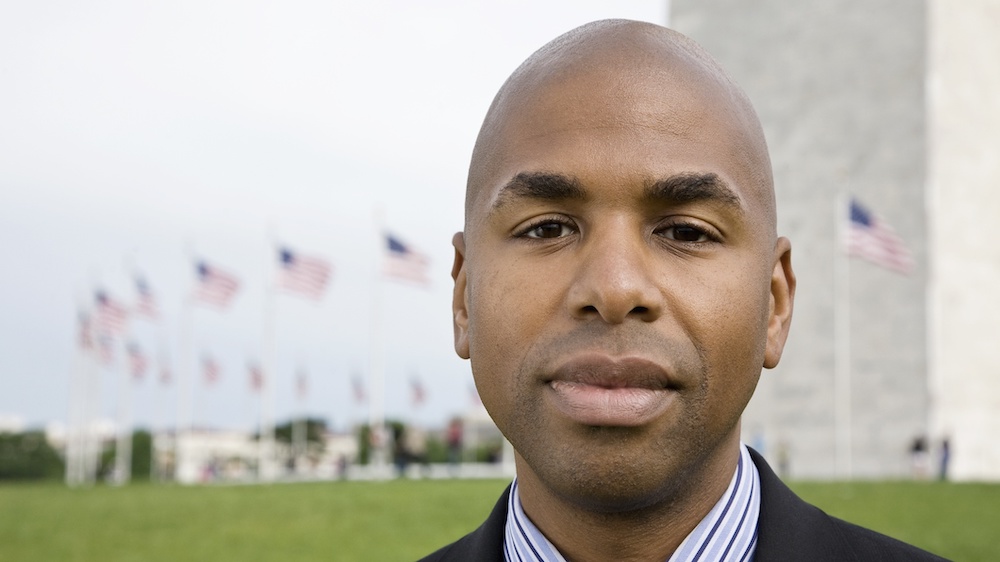If you’re interested in sharing your opinion on any cultural, political or personal topic, create an account here and check out our how-to post to learn more.
Opinions are the writer’s own and not those of Blavity's.
____
We are hurtling toward a particularly consequential midterm election.
The national narrative will focus on the Senate and the Congress, the fragility of Democratic majorities in both and the impact of political polarization on the voting behavior of the American electorate. There will be hand wringing, pearl-clutching and endless finger-pointing should those majorities crumble.
What will likely be underreported and analyzed is the role that the historically anemic support for the pipeline of diverse candidates and leaders at a local level has played in the constant threats to nascent progressive majorities on the national stage. Coupled with the census-driven redistricting process that will create more Republican-friendly Congressional districts, we are looking at both organizational and structural challenges that will be as difficult as ever to overcome.
We are now seeing the importance of local leadership and politics playing out in real-time. From threats of violence over mask and vaccination mandates and the fake outrage over critical race theory toward local schools leaders, to the erosion of reproductive rights and the evisceration of voting rights protections by radical state legislatures, the costs and consequences to and for our wobbling democracy are being levied and paid locally.
At the same time, white populations, and therefore the conservative voting base of many swing states, are declining rapidly, according to the 2020 Census. Meanwhile, the browning of America is accelerating: the number of residents who identified as two or more races increased by an astounding 276% between 2010 and 2020. This is a leading indicator of where our politics may head in the future — and it’s the precise reason why largely white, conservative majorities in state legislatures around the country are clamping down hard on voting rights under the veil of “election security.”
Black and brown communities, low-income communities and our neighbors already furthest from opportunity will feel the crushing weight of these dynamics first and foremost. Propelling leaders from these communities to civic and political power is essential for lasting progressive politics.
Yet, underinvestment in Black and brown-led organizations and leaders is as well documented as it is galling. And that inadequately funded ecosystem of leaders of color means that fewer Black and brown folks are able to make the leap from community leadership to elected leadership. The result is plain as the day is long: elected leaders look less and less like the country that they govern. The politics and policies that flow from these leaders are designed to preserve their power at the cost of diverse communities.
This isn’t anything new, we’ve only had 33 U.S. Senators of color and just four Black governors ever in U.S. history. It’s not getting much better as of late. Some 73% of 2020 primary candidates were white men. A subgroup that accounts for just 30% of the population. Meanwhile, men and women of color accounted for just 5 and 2.5% of candidates, respectively.
Despite some important gains, particularly around the growing number of Black women actually being elected, we’ll need a concerted and comprehensive effort to build a candidate and ultimately elected official universe that reflects the robust diversity of the American population.
At Leaders of Color, we're working to make that happen. Our goal is to bridge the gap between the tremendous talent of community-based leaders of color and the resources and investment required to empower those leaders to create lasting civic change. We work to identify diverse leaders with the passion and commitment to succeed, if given the appropriate support. We then train them in civic engagement and leadership.
Finally, we support our alumni with personalized coaching and goal planning. The result, so far, is more than 100 trained leaders in New York, Memphis and New Orleans who have or are running for office or have formed community organizations dedicated to lifting up communities of color. Our goal is to train more than 400 across the U.S. by 2023.
While we are actively cultivating, building and tending a growing pipeline of Black and brown leadership, we aren’t alone in this work. We have, however, precious few fellow travelers, far from the number needed to reverse the powerful headwinds we face. Despite those long odds, we know it’s the work that’s most essential. It’s the only way we’ll actually create a body politic that mirrors the true image of America and deliver the kind of progress our communities deserve.

